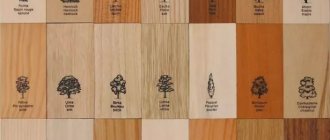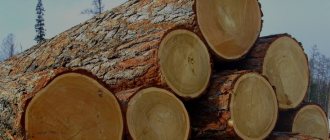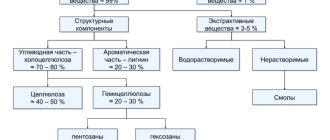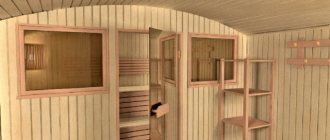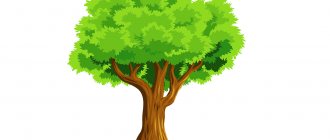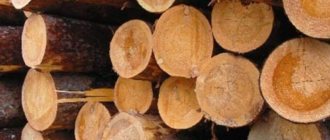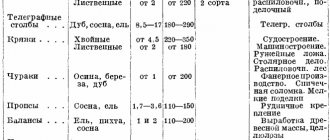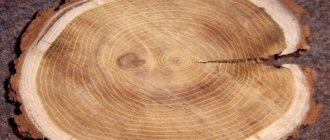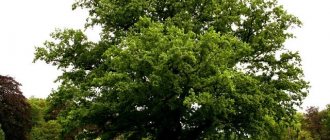Scope of wood use. Its advantages and disadvantages as a structural material
Unlike many types of raw materials that are used and non-renewable (gas, coal, ore, oil, peat, oil shale, etc.), wood is a raw material whose reserves can be continuously restored.
On the globe, about a third of the area is land, and about a third of it is covered with forests. Russia accounts for about a fifth of all forests on the globe. Wood as a raw material is used to produce many types of products. These are furniture (cabinet, lattice, upholstered), carpentry and construction products (windows, doors, parquet, milled moldings), musical instruments (grand pianos, violins, guitars, cellos), wooden vessels (boats, yachts, canoes, ships for rowing), sports equipment (skis, clubs, skids, bats), containers (boxes, barrels, bottles), etc. Wood is an excellent material for the internal equipment of passenger railway cars and ships; parts and components of agricultural trucks are made from it equipment, cases for radios and televisions, watches, microscopes and precision mechanics instruments, boxes, dishes, art products, lumber products are made from wood, as well as plywood, wood and particle boards, it is used in the construction of bridges, piers, it is indispensable in the production of blocks for shoes, tool handles, reels, shuttles, matches, pencils.
Moreover, due to the anisotropy of the properties, the shrinkage and swelling of wood in different directions are different. Shrinkage along the fibers is practically zero; it is greatest in the tangential direction. In the radial direction, wood shrinkage is approximately 2 times less than in the tangential direction.
The disadvantages of wood as a structural material also include easy flammability, rotting, especially under conditions of variable temperatures and air humidity, color changes under the influence of light rays and various substances, low wear resistance, especially along the fibers, etc.
However, the advantages of wood as a material for construction are so great that, despite the significant development of the technology of artificial materials - wood substitutes, it is not possible to completely replace it with any other material. In addition, over thousands of years of using wood, people have learned to design products from it in such a way as to eliminate disadvantages as much as possible and identify advantages. In some cases, individual shortcomings are used for necessary purposes. For example, swelling is used for the manufacture of tank containers, glued load-bearing structures of large cross-section are made, which, in the event of a possible fire, become charred on the outside, remaining intact on the inside, etc.
Wood as a material for making products has a number of advantages that no other structural material has. Wood has a low volumetric weight with relatively high strength; For every gram of its weight, pine, larch, and fir wood can withstand the same tensile load as steel, 3 times greater than cast aluminum and 7 times greater than cast iron. The thermal conductivity of wood is 2-4 times less than the thermal conductivity of glass, 4-9 times less than the thermal conductivity of reinforced concrete and hundreds of times less than the thermal conductivity of steel.
Wood is easily processed with cutting tools, glues well with various adhesives, fastened with screws and nails, painted, varnished, polished. It has high elasticity, absorbs sounds well when impacted, therefore it is widely used in carriage building and construction.
High resonant properties (especially of fine-grained spruce) make wood an indispensable material in the production of musical instruments, including those with complex wooden mechanics.
The great resistance of wood against acids and alkalis allows the production of plywood pipes for aggressive liquids. Such pipes are more widely used than metal pipes.
Its significant plasticity makes it possible to make bent products from it.
Wood is well pressed, thereby increasing its physical and mechanical properties, which makes it possible to use it instead of well-known metals in critical mechanical engineering parts (sliding bearings).
Having low electrical conductivity, wood is used as a dielectric in such critical installations as installations using high frequency currents (HFC).
However, wood as a structural material has significant disadvantages. Wood is anisotropic, i.e. its physical and mechanical properties in different structural directions are heterogeneous. For example, when compressed along the grain, the strength of wood is 3-4 times greater than when compressed across the grain. The strength of wood when stretched across the grain is 30 times less than when stretched along the grain. Knots significantly reduce the strength of wood. Thus, with a beam width of 100 mm, a healthy knot d = 50 mm on the face reduces the strength by 2 times.
The drier the wood, the stronger it is. Wood with a moisture content of 30% has a bending strength of 70% of the strength at a moisture content of 15%.
A significant disadvantage of wood is the change in shape and size depending on temperature and humidity. The wood dries out, warps, and swells. A change in air humidity entails a change in the volume of wood: the higher the humidity, the greater the volume of wood. For example, the moisture content of the wood of external doors varies from 10 to 26% throughout the year.
Wood, crushed to fiber size, is used to produce paper, cardboard, fiberboards, and paper-decorative laminates. In the process of chemical and microbiological processing, various products and substances are obtained: artificial fabrics and furs, film and photographic films, alcohols, medicines, veterinary and cosmetic preparations, lubricating oils, varnishes and paints, glue, pesticides, feed yeast, food acids, glucose, packaging films, artificial leather, tanning agents, glycerin. Essential oils, medicinal pine extracts, pine vitamin flour and other products are obtained from pine needles and leaves. It is estimated that people use up to 20 thousand different things made of wood in everyday life and at work. There is not a single industry that does not, to one degree or another, use wood products or its chemical processing products.
Mechanical properties of wood
In production, the mechanical properties of wood are more important, since the strength and durability of products depends on them.
Mechanical strength
wood is its ability to withstand various loads. Based on the direction of the load, they distinguish between compressive, bending, shearing, and tensile strength. At the same time, the compressive and tensile strength of wood when the load is directed along the fibers is significantly higher than when the load is directed across the fibers. The mechanical strength of wood depends on its physical properties: an increase in humidity reduces strength, dense wood is more durable.
Plastic
– the ability of a wooden part to change shape under the influence of load and maintain this shape after removing the applied load. This property is important in the manufacture of bent parts: it is important to know that with increasing humidity and temperature of wood, its plasticity increases; therefore, parts that need to be bent are treated with hot water or steam. Beech, elm, oak, and ash wood have high plasticity. Coniferous wood does not have the plasticity sufficient to bend parts due to the straight structure of the fibers.
Hardness
wood is due to its ability to resist the introduction of foreign bodies. According to this criterion, wood is divided into hard - beech, oak, maple, ash, elm, larch (the hardest are boxwood and acacia) and soft - linden, spruce, pine, alder.
Hardness determines another mechanical property of wood - its wear resistance,
ability to withstand friction. There is a direct relationship here: the harder the wood, the higher its wear resistance.
Physico-mechanical, technological and decorative properties of wood
2.1. Physical properties of wood
The various properties of wood directly depend on the structure of the wood.
Appearance of wood. Wood is characterized by color, shine, texture, and smell.
Color is a visual perception that depends on the spectral composition of the light flux reflected by it. The science of color measurements - colorimetry - characterizes the quantitative characteristics of color by three indicators - color tone, pure and light. The color of wood can be determined using a color atlas or colorimeter. It varies from white to black and depends on the breed, climate, growing conditions, and age. The original color of wood changes under the influence of sun, air, oxidation, combination with metal salts, fungal attack and decay. When producing products, the color of wood is sometimes specially changed by bleaching it or painting it darker or brighter colors.
Young trees usually have lighter wood than older trees. Oak, pear, white acacia, boxwood, chestnut, and apple trees have stable colors.
Conditional classification of species by wood color:
- White – birch, maple, aspen, linden, hornbeam, spruce, fir;
- Gray – walnut, persimmon, ash, white acacia (kernel);
- Black – ebony, makassar;
- Brown: light – walnut, chestnut, elm, oak, pear;
- dark – polysander, apricot, teak;
- red – maklura, holly, mahogany, alder;
- red-violet – amaranth;
- brown – oak, elm, larch, cedar, walnut, yew, beech, mahogany;
- pink – pear, beech, alder, plane tree, apple tree;
The shine of wood appears when incident light is reflected. The core rays have this ability; the rest of the surface does not have a noticeably expressed shine. Since in most cases wood products are coated with paints and varnishes, the natural shine of the wood is covered by the mirror, matte or covering surface of the finishing layer.
The wood of beech, maple, elm, sycamore, white acacia, and oak is particularly shiny. The silky shine is characteristic of velvet wood. The wood of aspen, poplar, and linden with very narrow core rays and relatively thin cell walls has a matte surface.
texture is a pattern formed on the surface as a result of cutting wood elements (vessels, annual layers, medullary rays, etc.). The texture depends on the type of wood (coniferous is simpler and more uniform, deciduous is more complex and varied), the plane of the cut (radial, tangential, end), waviness, curl, and differences in the color of individual elements. Coniferous species in tangential and end cuts have a beautiful texture due to the sharp difference in the color of early and late wood. Deciduous species with pronounced annual layers and developed medullary rays (oak, beech, maple, elm, elm, plane tree) have a very beautiful texture of radial and tangential sections. There is a particularly beautiful pattern on sections of wood with a directional and confused (twisted) arrangement of fibers (burls, growths), as well as with traces of dormant buds (eyes).
Texture characterizes the decorative value of a wood product.
The smell of wood depends on the presence of odorous and aromatic substances in it - essential oils, resins, tannins. The smell is strongest in freshly cut conifers. The odor factor is taken into account when making containers for storing and transporting various products. Thus, containers for honey should be made from linden, oil should be packed in beech containers, oak barrels should be used for wine, and woolen items are perfectly stored and are not spoiled by moths in cedar chests and chests of drawers. The characteristic smell of turpentine is found in conifers - pine and spruce. Oak smells of tannins, while backout and rosewood smell of vanilla. You can determine the species by the characteristic smell of wood.
The macrostructure is characterized by the width of the annual layers, determined by the number of annual layers per 1 cm of a segment measured in the radial direction on a transverse section. Coniferous wood has higher physical and mechanical properties if there are at least 3 and no more than 25 layers in one cm. In deciduous ring-vascular species (oak, ash), the increase in the width of the annual layers occurs due to the late zone, and therefore strength, density and hardness increase. The wood of deciduous scattered vascular species (birch, beech) does not have a clear dependence of its properties on the width of the annual layers. Based on samples of coniferous wood and ring-vascular deciduous species, the latewood content is determined as a percentage. The higher the percentage of latewood, the greater its density and, therefore, the better the mechanical properties.
Humidity of wood, properties associated with its change . Humidity characterizes the quantitative assessment of the moisture content in wood.
Absolute humidity (W) is the percentage of the mass of moisture to the mass of absolutely dry wood:
(1)
where m is the mass of wet wood, g; mc – mass of absolutely dry wood, g.
Wood with a moisture content of more than 100% is considered wet, in the range of 100...50% - freshly cut, in the range of 20...15% - air-dry, in the range of 12...8% - room-dry and near zero - absolutely dry. Humidity of 20...22% is called transport, during the period of operation of wood products - operational, in the process of manufacturing parts and assemblies - production (usually less than 1...2% of operational). Operating humidity values, %, for lumber and wooden parts:
- Lumber – 20…22
- Parts and blanks: for equipment construction - 10...12
- automobile — 12…15
- agricultural machines - 12
- freight cars - 18
- passenger domestic - 10
- passenger external - 15
- window frames and door panels - 1-2
- frames of external doors and windows - 18
- frames of internal doors and transoms - 15
The moisture content of growing wood, depending on the species and element (kernel, sapwood), ranges from 30 to 120%.
There are two types of moisture in felled wood - free and bound. Free is moisture that fills the cavities of cells and blood vessels. Bound is moisture located in the cell walls. The condition of wood, in which the amount of bound moisture is the maximum possible, and there is no free moisture, is called the cell wall saturation limit; for most species it is approximately 30%. When the humidity is above the fiber saturation limit, free moisture begins to appear in the cell cavities. The maximum amount of free moisture that can be in wood depends on its structure and can reach up to 250%. Wood containing only bound moisture is called damp; wood containing bound and free moisture is damp.
The humidity to which the moisture content of wood tends when exposed to constant air for a long time is called equilibrium.
The value of actual moisture content that wood reaches, tending to equilibrium, is called stable moisture content. For solid wood (more than 100 mm long and more than 15 mm thick), the stable moisture content is approximately 1.25% more or less than the equilibrium moisture content. For crushed wood (sawdust, shavings, wood chips), the stable moisture content differs little (±0.15%) from the equilibrium one.
Moisture absorption is the ability of wood to absorb moisture from the surrounding air. This is a negative property of wood (for most cases). To reduce its influence, the wood is coated with varnishes and impregnated with various compounds.
Water absorption is the ability of wood to absorb droplet moisture. It is important in wood rafting, pulp production, etc.
Hydraulic conductivity is the ability of wood to pass moisture from areas of high humidity to areas of low humidity. It is important in hydrothermal processing of wood. Hydraulic conductivity is characterized by the coefficient of hydraulic conductivity, the value of which depends on temperature, species, density, location of the wood in the trunk, direction of moisture flow relative to the wood fibers.
Shrinkage and swelling are phenomena associated with a decrease or increase in moisture content in wood and consist in a decrease or increase in its linear dimensions and volume. They are observed when wood moisture content changes from 0 to 30%. Complete drying is a reduction in the linear dimensions or volume of wood when the humidity changes from the point of saturation of the fibers to the removal of all bound moisture. The amount of linear shrinkage is not the same in different directions relative to the direction of the fibers. The greatest complete shrinkage is observed in the tangential direction of 6-10%; in the radial – 3-5%; along the fibers – 0.1-0.3%; total volumetric shrinkage is 12-15%.
Internal stresses in wood arise when bound moisture is removed as a result of drying. The causes of stress are the following: uneven removal of moisture across the cross section and different amounts of shrinkage in different (radial and tangential) directions.
In lumber (boards, bars), non-uniformity of shrinkage entails a change in the cross-sectional shape of the material, i.e. transverse warping of wood. Longitudinal warping of wood can be a consequence of different amounts of shrinkage along the fibers of different zones (for example, heartwood, sapwood). Winging is a spiral warping resulting from the inclination of the fibers.
Density of wood . Density, kg/m3 or g/cm3, is the mass per unit volume of a material. Several indicators are used to characterize the density of wood.
The density of woody matter is the mass per unit volume of the material that forms the cell walls.
The density of absolutely dry wood is the mass per unit volume of wood in the absence of water.
The relative density of woody matter is determined by the ratio of the density of the cell membrane to the density of water at a temperature of 3.98 0C and averages 1.54, i.e. woody matter is 1.54 times heavier than water.
The density of wood depends on its species and humidity. In order for the measurement results to be comparable, it is customary to calculate the density at a standard wood moisture content of 12%.
The density value is then calculated using the formula, kg/m3:
(2)
where m12 is the mass of the wood sample at a moisture content of 12%; V12 – volume of wood sample at 12% humidity.
Wood permeability is the ability of a wood substance to pass liquids and gases. This property should be taken into account when developing regimes for impregnation and drying of wood, in cases of using it for the manufacture of barrels, pipelines, wooden ships, as well as when disinfecting wood contaminated with insects or fungi. Permeability depends on the direction of the fibers, species, position in the trunk (kernel, sapwood). The medullary rays have a significant influence on the permeability across the fibers. Water permeability is assessed by the amount of water, cm3, passing through a sample with a diameter of 47 mm and a height of 20 mm at a pressure of 0.01 mPa in 24 hours with steady water movement, and the final moisture content of the sample according to GOST 16483.15 “Wood. Method for determining water permeability."
Gas permeability is assessed by the amount of air, m3, passing through the surface of a sample with an area of 1 cm2 in 1 second GOST 16483.34 “Wood. Method for determining gas permeability."
Thermal properties of wood. The main thermal properties of wood include: heat capacity, thermal conductivity, thermal diffusivity and thermal expansion. The indicator of heat capacity is the specific heat capacity C, J/(kgdeg.), - this is the amount of heat that must be expended to heat 1 kg of mass of wood substance by 1 0C. The higher C, the greater the amount of heat that can be accumulated per unit volume.
Thermal conductivity is characterized by the thermal conductivity coefficient λ W/(m deg) - this is the amount of heat passing per unit time through a wall of a given material 1 m thick, with an area of 1 m2, with a temperature difference on opposite sides of the wall of 1 0C. The values of thermal conductivity and heat capacity of wood are necessary when performing calculations of hydrothermal processing of wood, when using wood in construction and the manufacture of wood utensils.
Thermal diffusivity is characterized by the thermal diffusivity coefficient a, m2/s (heat propagation speed) - this is the ability of wood to equalize temperature across its cross section. For absolutely dry wood, the coefficient of thermal diffusivity increases with decreasing density, since the thermal diffusivity of air is 100 times greater than that of the wood substance, and approximately 150 times greater than that of water.
The thermal expansion of wood is characterized by the coefficient of linear thermal expansion α, 1/deg, which is the change in unit length of a body when it is heated by 1 0C. In practice, this property is usually not taken into account, because linear expansion along the fibers is 3-10 times less than for metals, and can be neglected, and expansion across the fibers (at a humidity less than 30%) caused by an increase in temperature is much less than the moisture expansion that occurs as a result of an increase in temperature.
Sound properties of wood. These properties are characterized by the ability of wood to conduct, absorb, reflect, and resonate sound.
Sound conductivity is characterized by the speed of sound propagation:
(3)
where C is sound conductivity. m/s; l – sample length, m; f – resonant frequency, s-1; τ – time of elastic wave propagation, s.
The value of C along the wood fibers, depending on its species, is 4700-5600 m/s; across the grain it is 3-4 times less. By changing the speed of propagation of ultrasound in wood, its quality indicators can be monitored.
The sound permeability of wood is assessed by the difference in sound pressure levels (dB - decibel) in front of and behind the wood partition. Sound absorption is assessed by the sound absorption coefficient - the ratio of the sound energy lost in the material to the amount of energy supplied.
Resonance is the ability of wood to amplify and emit sound, also called resonant. In wooden musical instruments, the vibrations of the string are transmitted to the soundboard, which radiates them into the air. Soundboards are made from special types of wood called resonance wood. These are, first of all, spruce, cedar, and fir.
Electrical properties of wood . Electrical conductivity - the ability of wood to conduct electric current - is inversely related to its electrical resistance. The total resistance of a wood sample placed between two electrodes is determined as the result of two components: volumetric (through the thickness of the sample) and surface resistance. Specific volume resistivity, Ohmxcm, is equal to the resistance of current passage through a wood sample measuring 1x1x1 cm; specific surface resistance, Ohm, is equal to the resistance of a square section of the surface of the sample when current is supplied to the electrodes delimiting two opposite sides of this square. Tests to measure the electrical resistance of wood are carried out in accordance with GOST 18408 “Wood. Methods for determining electrical resistance at constant voltage." The resistivity of wood is of practical importance if the wood is used for communication poles and power lines, when measuring the moisture content of wood, and when applying varnishes in an electric field.
Electric strength is characterized by the ratio of the voltage at which breakdown of the material occurred to the thickness of the material:
(4)
where Epr. – electrical strength, kV/mm; Upr – breakdown voltage, kW; h – material thickness, mm.
This indicator is important when assessing wood as an electrical insulating material.
The dielectric properties of wood are assessed by two indicators: dielectric constant ε and dielectric loss tangent tan δ. The first indicator is numerically equal to the ratio of the capacitance of a capacitor with a wood gasket to the capacitance of the same capacitor with an air gap. The second indicator is characterized by the loss angle δ. This is the angle between two current vectors, one of which leads the voltage vector by an angle of 900, if there are no losses, the second leads the voltage vector by an angle less than 900 due to dielectric losses in the wood. ε value for air 1, wood 2-4, glue 25, tg δ for wood 0.07; glue 0.6. These properties depend on the density of the wood and are taken into account when calculating the heating processes of the material in the field of high-frequency currents during drying, as well as gluing and bending of wood.
Properties of wood that appear when exposed to radiation. Infrared (IR) radiation . The ability of wood to transmit, absorb and reflect infrared rays depends on the wavelength of the supply radiation (their wavelength range is from 1000 to 0.77 microns). This ability makes it possible to measure the moisture content of the surface zones of solid wood, measuring the moisture content of wood particles in the particle board industry. The absorption of IR rays causes heating of the material, which allows them to be used for drying veneer, chips, shavings, heating wood during gluing, and also for sterilizing it. IR rays are quite widely used for drying paint and varnish coatings.
Light radiation covers part of the spectrum with wavelengths from 0.76 to 0.44 microns. These rays have greater penetrating power than IR rays and are used to detect hidden defects inside wood or wood products. Recently, laser technology has been developing successfully. The laser is used for figured cutting of sheet wood materials, carving, and engraving work.
Ultraviolet (UV) radiation . These rays have wavelengths from 0.38 µm to 10 nm. UV radiation causes glow - luminescence of some substances. The color and intensity of the glow depends on the type and condition of the wood (humidity, temperature, surface roughness, etc.). This allows the use of luminescence to detect defects, control the quality of processing, etc.
X-ray radiation covers part of the spectrum with wavelengths from 5 nm to 0.6 pm. X-rays can be used to detect hidden defects in wood, to determine moisture content and the nature of its distribution, to study the density of wood and the fine structure of the cell wall.
Ionizing radiation occurs during the decay of radioactive substances, the fission of atoms of heavy nuclei, and nuclear reactions. These radiations are used to measure the density of wood, its moisture content, to control the size of parts, and to detect hidden defects.
2.2. Mechanical properties of wood
Durability of wood. Strength is the ability of wood to resist destruction from mechanical forces.
Depending on the direction of action of forces, tension, compression, shear, transverse bending, torsion and longitudinal bending are distinguished. Under the influence of forces, stresses arise in the wood and deformation appears, i.e. changing the size and shape of the sample. If, after the cessation of the force, the deformation completely disappears, it is called elastic; if it partially remains, it is called residual. The strength of wood is characterized by its tensile strength - the maximum value of stress.
When calculating the structure, the so-called permissible stresses are taken. The ratio of the tensile strength to the permissible stress is called the safety factor. To calculate elements made of pine and spruce used in a dry room under long-term loads, the following permissible stresses, MPa, are taken:
- bending and compression along the fibers 10;
- stretching along the fibers 7;
- cutting across the grain 4.5;
- crushing across the fibers 3.5;
- chipping along fibers 1-2;
- chipping across the grain 0.5.
For ash, oak, and maple wood, the permissible stresses can be 2 times higher, except for shear stresses, which are 1.6 times higher.
Hardness _ This indicator is encountered when studying its abrasion resistance (wooden floors, parquet, wooden flooring), when processing with cutting tools, and fastening (containers, building structures). Hardness varies on the end, radial and tangential surfaces. The hardest end surface (22-97 mPa depending on the rock at a humidity of 12%). The hardness of the radial and tangential surfaces is almost the same, and in relation to the end surface it is 30-40% lower. As humidity increases, hardness decreases.
Wood quality factors . When using wood, if not only strength is of decisive importance, but also the mass of parts and assemblies made from various materials, a complex indicator of the properties of the material is the quality coefficient - the ratio of the mechanical properties to the density of the material. If we compare the tensile quality coefficients of various materials, it turns out that wood in this indicator is higher than many metals, competing with the best grades of steel:
- alloy steel 0.95-2.3
- steel casting 0.45-0.55
- iron 0.32-0.42
- duralumin 1.1-1.7
- aluminum 0.3-0.4
- cast iron 0.3-0.51
- Wood:
- spruce, pine 1.4-2.1
- linden 1.7-2.4
- birch 1.9-2.7
Quality factors can be determined for any strength indicator. When comparing the performance of coniferous and deciduous wood, it can be established that deciduous wood is superior to coniferous wood in many mechanical properties. However, the quality indicators in compression and static bending of coniferous species are higher than those of deciduous species.
2.3. Technological properties of wood
Wood as a structural material has a number of important technological properties:
- The ability of wood to hold metal fasteners.
- The ability of wood to bend (deciduous ring-vascular species, for example, oak, beech, ash and scatter-vascular species - birch) have the best bending ability.
- Wear resistance of wood characterizes its ability to resist wear, that is, destruction during friction. The wear of wood on the side surface is greater than on the end surface. Wet wood is more susceptible to wear, but as density and hardness increase, wood wear decreases.
- Wood resistance to splitting (separation along the grain).
- Impact strength of wood is the ability to absorb forces (work) upon impact without destruction. The greater the amount of work required to fracture the sample, the higher its viscosity.
- The hardness of wood is the ability to resist the indentation of a body made of a harder material. All rocks are divided into three groups according to the hardness of the end surface: soft - with a hardness of up to 40 N/mm2, hard - 41-80 N/mm2 and very hard - more than 80 N/mm2.
Physical properties of wood
The physical properties of wood include: density, humidity, thermal conductivity, sound conductivity, electrical conductivity, corrosion resistance (i.e. the ability to withstand an aggressive environment), as well as its decorative qualities (color, shine, smell and texture).
Density
wood is the ratio of its mass to volume, measured in g/cm 3 or kg/m 3. This indicator depends on the type of wood, its age, growth conditions, and humidity. Wood that has a higher density lasts much longer and is less susceptible to rotting than less dense wood (however, it should be noted that for accurate comparative analysis, wood density is measured on samples with a moisture content of 15%). Oak has the highest density, so oak parquet boards are the most popular among consumers. Further: ash, maple, larch, beech, birch, walnut, pine, linden, aspen, spruce, fir.
Humidity
wood is an indicator of its quality and durability. In practice, wood is distinguished: room-dry, with a moisture content of 8–12%; air-dry artificially dried, with a moisture content of 12–18% (these two types of wood are obtained by drying in drying chambers); atmospheric-dry natural drying, with a humidity of 18–23% (obtained as a result of long-term storage in dry, ventilated rooms or under a canopy, without exposure to direct sunlight), damp wood, with a humidity of more than 23%.
The lower the wood moisture content, the better it resists rotting. However, you should not strive to use wood with the lowest moisture content. The fact is that the structure of wood is very hygroscopic: it easily gives off excess moisture when the temperature rises and the ambient humidity decreases, and just as easily absorbs moisture when the temperature drops and the ambient humidity increases. This leads: in the first case, to drying out of the wood (reduction in its size); in the second case - to its swelling (increase in size). The result of this is warping of the wood, deformation of wooden structures, which ultimately renders them unusable. Therefore, it is best to use wood whose moisture content at the time of use corresponds to the operating humidity.
Thermal conductivity, sound conductivity.
Wooden houses made of logs or timber retain heat well. Healthy wood is capable of spreading sound along the fibers: if, after hitting the butt part of a log, board or beam, a clear ringing sound is heard, this indicates the high quality of the wood; an intermittent, dull sound indicates its decay.
Corrosion resistance
timber is very important for buildings that are used mainly in the open air. It should be noted that coniferous wood is more resistant to corrosion than deciduous wood, since coniferous wood is well impregnated with resinous substances.
Color, shine, smell and texture
are physical properties of wood that allow you to visually determine its species.
Color can indicate the quality of the wood: for example, the bluish color of coniferous wood indicates the initial stage of decay (the color of healthy pine is from brownish-yellow in areas saturated with resin to light yellow; the color of spruce is from light yellow to white); black and dark brown spots on beech wood are a sign of decay (the color of a healthy beech is from yellow to pinkish-beige).
A change in odor can also indicate wood defects.
The texture of wood depends on the cut, and the mechanical strength of certain boards or bars depends on the type of cut. But color, shine, and texture are purely decorative.
used and new woodworking machines
Physical properties of wood
26.04.2021
These include: appearance, smell, macrostructure indicators, humidity and associated changes (shrinkage, swelling, cracking, warping), density, electrical, sound and thermal conductivity.
Appearance of wood
The appearance of wood is characterized by the following properties: color, gloss, texture and macrostructure.
1.Wood color.
The color
as a certain visual sensation, which depends mainly on the spectral composition of the light flux reflected by it.
Color is one of the most important characteristics of the appearance of wood. It is taken into account when choosing species for interior decoration, making furniture, musical instruments, artistic crafts, etc. The wood of oak, beech, white acacia, and velvet tree has the greatest shine among domestic species; from foreign ones - satinwood and mahogany (mahogany) wood. Wood color shades have a wide range. It must be remembered that the color of wood can vary not only depending on the species, but within one species there can be several dozen variants of tonal relationships. This factor is influenced by the climatic conditions in which the tree grew and other natural factors. Identifying and using a color palette is a crucial moment in the design search. The color of wood is given by coloring tannins found in its fiber. Wood species with warm shades predominate (yellow, ocher, red, red-brown, brown), but there are green, blue, purple and black wood species, which are considered exotic in our country. The color shades of various species can be classified into main groups, where one color of wood will be predominant: yellow - birch, spruce, linden, aspen, hornbeam, maple, fir, ash (whitish-yellow with light shades of pink and red), barberry (lemon- yellow), mulberry (golden yellow), hawthorn, Karelian birch, lemon tree, acacia (sapwood), bird cherry (reddish-brownish yellow), ailanthus (pinkish yellow); brown - cedar, poplar, elm kernel (light brown), beech, larch, alder, pear, plum (reddish-pinkish-brown), chestnut, rowan (brown-brown), acacia (yellow-brown), Anatolian walnut ( greenish-brown); brown - cherry (yellowish-brown), apple (yellowish-pinkish-light brown), apricot, walnut (light (dark) brown); red - yew, maclura, paduk, mahogany; red-violet - amaranth; pink - cherry laurel (yellowish-pink), pear, alder, plane tree (dark pink); orange - buckthorn; purple - lilac, privet (kernel); black - stained oak, ebony, Macassar; greenish - persimmon, pistachio. 2. The shine of wood
is the ability to reflect light from the surface in a certain direction.
Different breeds have different shine; To a large extent, this property is manifested in beech, maple, plane tree, and white acacia. Poplar, linden, aspen, and teak have a matte (satin) sheen; silky - willow, elm, ash, bird cherry; golden - cherry; silver - Siberian cedar; moire - birch, gray maple, cherry laurel. The shine of the wood depends not only on the presence and size of the core rays, but also on the nature of their placement along the cuts: the larger the core rays (for example, in oak) and the denser the wood, i.e., the more crowded the core rays are (for example, in maple ), the greater the shine of the wood. The distribution of gloss over the surface is uneven and depends on the type of cut: in the radial plane it is stronger, in the transverse plane it is weaker. The light and shadow tints in some species are clearly visible only in a longitudinal section of the trunk, in others - in all sections. They significantly affect the decorative qualities of wood, enhancing or weakening its expressive sound, so the shine of wood is taken into account when compiling mosaic sets. Distinctive features and use of wood species. 3. Wood texture
. Wood texture is the natural pattern of wood fibers on the treated surface, due to the peculiarities of its structure. The texture depends on the anatomical structure of individual wood species and the direction of the cut. It is determined by the width of the annual layers, the difference in the color of early and late wood, the presence of medullary rays, large vessels, and irregular arrangement of fibers (wavy or tangled). Coniferous species in a tangential section have a beautiful structure due to the sharp difference in the color of early and late wood. Deciduous species with pronounced annual layers and developed medullary rays (oak, beech, maple, elm, elm, plane tree) have a very beautiful structure of radial and tangential sections. There is a particularly beautiful pattern on sections of wood with a directional and confused (twisted) arrangement of fibers (burls, growths), as well as with traces of dormant buds (eyes). Softwoods and softwoods have simpler and less varied patterns than hardwoods. The decorative value of wood is determined by its texture, which is enhanced and revealed with transparent varnishes.
Wood texture
Table 1.
| Wood name | Texture |
| White acacia | Stripes, rings, thin lines |
| Amaranth | Dark brown stripes, dashes |
| Common birch | Moire pattern, silky shine |
| Karelian birch | Pattern in the form of brown convolutions or dashes, bright |
| Beech | Shiny specks, dark thin strokes |
| Cherry | Sound breed, striped |
| Hornbeam | The texture is weak |
| Pear | The texture is weakly expressed, homogeneous |
| Oak | Large texture with annual layers, large vessels, core rays in the form of flames, dark strokes |
| Elm | Moire texture with silky shine |
| Russian maple | Delicate pink texture, silky shine |
| Maple: sycamore and bird's eye | Silky shine |
| Lemon Tree | Ribbon texture |
| Mahogany | Band structure |
| Alder | Texture is expressed |
| Walnut | Beautiful texture with dark veins |
| Aspen | The texture is weak |
| Rosewood | The texture is large, expressive with dark short lines |
| Rowan | With small pores, weakly expressed |
| Boxwood | Texture with barely noticeable veins, weakly expressed |
| Teak | The texture is large and expressive. Reminds the texture of a nut |
| Apple tree | The texture is weakly expressed, homogeneous |
| Ash | The texture is sharply expressed in the form of stripes |
The smell of wood.
The smell of wood depends on the amount of essential oils, resins and tannins. Wood from a tree that has just been cut down or has been mechanically processed has a strong odor; conifers have a stronger odor than hardwoods. The characteristic smell of turpentine is found in conifers - pine and spruce. Oak smells of tannins, while backout and rosewood smell of vanilla. You can determine the type of wood by the smell of wood.
Macrostructure
The macrostructure is characterized by the width of the annual layers, determined by the number of layers per 1 cm of a segment measured in the radial direction on a transverse section. Coniferous wood has higher physical and mechanical properties if there are at least 3 and no more than 25 layers in 1 cm. In deciduous ring-vascular species (oak, ash), the increase in the width of the annual layers occurs due to the late zone and therefore the strength, density and hardness increase. The wood of deciduous scattered vascular species (birch, beech) does not have a clear dependence of its properties on the width of the annual layers. Based on samples of coniferous wood and ring-vascular deciduous species, the latewood content is determined as a percentage. The higher the latewood content, the greater its density and, therefore, the better the mechanical properties.
Humidity.
The moisture content of (absolute) wood is the ratio of the mass of moisture contained in a given volume of wood to the mass of absolutely dry wood, expressed as a percentage.
Moisture in wood permeates cell membranes (bound or hygroscopic) and fills cell cavities and intercellular spaces (free or capillary). When wood dries, first free moisture evaporates from it, and then hygroscopic moisture. When moistening wood, moisture from the air permeates only the cell membranes until they are completely saturated. Further moistening of wood with filling of cell cavities and intercellular spaces occurs only with direct contact of wood with water (soaking, steaming). It follows from this that once dried wood, without being in direct contact with water, cannot have a moisture content above the limit of hygroscopicity -
the state of wood in which the cell membranes contain the maximum amount of bound moisture, and the cell cavities contain only air. The complete saturation of wood with water is called the hygroscopic limit. This stage of humidity, depending on the type of wood, is 25-35%. Wood obtained after drying at a temperature of 105 ° C with the complete release of all hygroscopic moisture is called absolutely dry wood. In practice, wood is distinguished: room-dry (with a humidity of 8-12%), air-dry artificially dried (12-18%), atmospheric-dry wood (18-23%) and damp (humidity exceeds 23%). Wood from a tree that has just been cut down or has been in water for a long time is called wet, its moisture content is up to 200%. There is also operational humidity, which corresponds to the equilibrium moisture content of wood under specific conditions.
Average humidity
in the freshly cut state
,
% Table 2.
| Breed | % |
| Spruce | 91 |
| Larch | 82 |
| Fir | 101 |
| Scots pine | 88 |
| Siberian cedar pine | 92 |
| Small-leaved linden | 60 |
| Aspen | 82 |
| Alder | 84 |
| Poplar | 93 |
| Birch | 78 |
| Beech | 64 |
| Elm | 78 |
| Oak | 50 |
| Common ash | 36 |
Shrinkage.
Shrinkage is a reduction in the linear dimensions and volume of wood during drying. Drying begins after the complete removal of free moisture and the beginning of the removal of bound moisture. Shrinkage in different directions is not the same. On average, complete linear shrinkage in the tangential direction is 6...10%, in the radial direction - 3...5% and along the fibers - 0.1...0.3%. The reduction in wood volume due to the evaporation of bound moisture is called volumetric shrinkage. When sawing logs into boards, allowances are made for shrinkage so that after drying the lumber and workpieces have the specified dimensions.
Wood shrinkage (from water-saturated to completely dry) Table 3.
| Type of wood | Shrinkage% | ||
| Longitudinal | In tangential direction | Radial direction | |
| Afzelia | 0,2 | 4-4,5 | 2-3 |
| Balsa wood | 0,6 | 3-5 | 2-3 |
| Birch | 0,6 | 3-5 | 2-3 |
| Beech white | 0,5 | 10-12 | 6-7 |
| Beech | 0,3 | 8-12 | 6-9 |
| Cherry | 0,3 | 7-8 | 4-5 |
| Elm | 0,3 | 8 | 4,5 |
| Pear | 0,4 | 7-9 | 4-5 |
| Oak | 0,4 | 8-10 | 4-5 |
| Spruce | 0,3 | 6-8 | 3-4 |
| Maple | 0,5 | 5-8 | 3-4 |
| Limbo | 0,2 | 4,5-7,5 | 3-6 |
| Larch | 0,3 | 7-8 | 3-5 |
| Nut | 0,5 | 8-12 | 5-6 |
| Fir | 0,1 | 7-9 | 3-4 |
| Pine (regular) | 0,4 | 6-8 | 3-4 |
| Resinous pine | 0,2 | 7-7,5 | 4-5 |
| Teak | 0,4 | 4,5-6 | 2-3 |
| Ash | 0,2 | 7-8 | 4-5 |
Internal stresses
Stresses that arise without the participation of external forces are called
internal
. The reason for the formation of stress when drying wood is the uneven distribution of moisture. If tensile stresses reach the limit of the wood's tensile strength across the grain, cracks may appear: at the beginning of the drying process on the surface of the log, and at the end - inside. Internal stresses remain in the dried material and cause changes in the size and shape of parts during mechanical processing of wood. Residual stresses are removed by additional processing of lumber (steam humidification).
Warping.
When wood dries or gets wet, the cross-sectional shape of the board changes. This change in shape is called warping. Warping can be transverse and longitudinal. Transverse is expressed in a change in the cross-sectional shape of the board. This happens due to the difference in shrinkage in the radial and tangential directions. Core boards decrease in size towards the edges: boards whose outer part is located closer to the tangential direction shrink more than the inner ones, which have a radial direction. The closer the board is to the core, the greater its warping. The boards can bend along their length, taking on an arched shape or the shape of a helical surface (winged). The first type of longitudinal warping occurs in boards containing core and sapwood (the shrinkage of core and sapwood along the length of the fibers is slightly different). Winging is observed in lumber with tangentially inclined fibers. To prevent warping, proper laying, drying and storage of wood is necessary. Swelling.
Swelling is an increase in the linear dimensions and volume of wood with an increase in the content of bound moisture. Swelling is observed with increasing humidity to the hygroscopic limit; an increase in free moisture does not cause swelling. Just like shrinkage, the greatest swelling of wood is observed in the tangential direction across the grain, and the least - along the grain.
Water absorption.
Water absorption is the ability of wood, due to its porous structure, to absorb droplet-liquid moisture. Water absorption occurs when wood comes into direct contact with water. At the same time, the content of both bound and free moisture in the wood increases.
Density of wood Wood density depends on humidity and for comparison, density values always lead to a single humidity - 12%. There is a close relationship between the density and strength of wood. Heavier wood is generally more durable. The density value varies within very wide limits. By density at a humidity of 12%, wood can be divided into three groups: - species with low density (510 kg/m3 or less): pine, spruce, fir, cedar, poplar, linden, willow, alder, chestnut, walnut; - medium density species (550...740 kg/m3): larch, yew, birch, beech, elm, pear, oak, elm, elm, maple, plane tree, rowan, apple, ash; - species with high density (750 kg/m3 and above): white acacia, iron birch, hornbeam, boxwood, saxaul, pistachio, dogwood.
Wood density (g/cm3) Table 4.
| Balsa | 0.15 |
| Siberian fir | 0.39 |
| Sequoia evergreen | 0.41 |
| Spruce | 0.45 |
| Willow | 0.46 |
| Alder | 0.49 |
| Aspen | 0.51 |
| Pine | 0.52 |
| Linden | 0.53 |
| Red tree | 0.54 |
| horse chestnut | 0.56 |
| Edible chestnut | 0.59 |
| Cypress | 0.60 |
| Bird cherry | 0.61 |
| Sapelli | 0.62 |
| Hazel | 0.63 |
| Walnut | 0.64 |
| Birch | 0.65 |
| Cherry | 0.66 |
| Smooth elm | 0.66 |
| Larch | 0.66 |
| Field maple | 0.67 |
| Teak | 0.67 |
| Beech | 0.68 |
| Pear | 0.69 |
| Oak | 0.69 |
| Afromosia | 0.70 |
| Switenia (mahogany) | 0.70 |
| Sycamore | 0.70 |
| Zhoster (buckthorn) | 0.71 |
| Hornbeam | 0.75 |
| Paduc | 0.75 |
| Tiss | 0.75 |
| Ash | 0.75 |
| Dussia | 0.80 |
| Kempas | 0.80 |
| Plum | 0.80 |
| Lilac | 0.80 |
| Hawthorn | 0.80 |
| White acacia | 0.83 |
| Pecan (cariah) | 0.83 |
| Yarra | 0.83 |
| Merbau | 0.84 |
| Jatoba (mareil) | 0,84 |
| Kulahi | 0.85 |
| Turmoil | 0.85 |
| Rosewood | 0.85 |
| Wenge | 0.90 |
| Lapacho | 0.90 |
| Olive | 0.90 |
| Sandalwood | 0.90 |
| Panga-panga | 0.95 |
| Boxwood | 0.96 |
| Lim | 0.97 |
| Rosewood | 1.00 |
| Sucupira | 1.00 |
| Kumara | 1.10 |
| Ebony persimmon | 1.08 |
| Ebony | 1.16 |
| Quebracho | 1.21 |
| Guaiacum or bakout | 1.28 |
Thermal conductivity
- this is the ability of the thickness of wood to conduct heat from one surface to the opposite.
Wood is characterized by a low thermal conductivity coefficient of 0.17-0.31 W/ (mC), depending on the species, density, humidity and direction of the cut. Dry wood is a poor conductor of heat. Sound conductivity
is the ability of wood to conduct sound. The sound conductivity of wood along the fibers is 16 times greater than the sound conductivity of air, and across the fibers - 3-4 times. The quality of wood is determined by its sound conductivity. After hitting the butt part of a growing or felled trunk, good sound propagation indicates the quality of the wood. An intermittent sound that becomes dull indicates rotting of the wood.
Speed of sound propagation in wood
Table 5.
| Direction | Pine | Birch |
| Along the fibers | 5030 | 3625 |
| Radial direction | 1450 | 1995 |
| In tangential direction | 850 | 1535 |
Electrical conductivity
wood is characterized by its resistance to the passage of electric current. It depends on the species, temperature, grain direction and moisture content of the wood. The electrical conductivity of dry wood is insignificant, which allows it to be used as an insulating material (sockets for plugs and switches, etc.).
Other articles:
- Types of timber
- Mechanical properties of wood
- Basic properties and structure of wood and wood
- Tables for plywood volume and weight
- Wood fiber boards
- Particle boards
- Measurements and acceptance of lumber
- Softwood lumber
- Wood defects
- Tree species
- Plywood
- Tables on the volume and weight of particle boards
- Determination of moisture content and drying of wood
- Hardwood lumber
- Adhesives
- Psychrometer
- Hand woodworking tools
- Hardening and sharpening of carpentry tools
- Malfunctions of woodworking machines, solutions.
- Safety rules when working on woodworking machines.
- Classification and indexing of woodworking machines
- Operation of a three-phase electric motor in a single-phase network
- Artificial lighting in industrial enterprises.
- First aid for electric shock
- Operation and repair of electric motors
- Electrical safety, Terms and definitions.
- Useful tips
- Carpenter's Dictionary (T-Y)
- Carpenter's Dictionary (A-K)
- Safety precautions when working with flammable materials.
- Literature on carpentry
- Carpenter's Dictionary (L-S)
